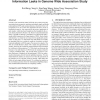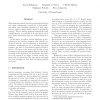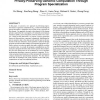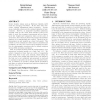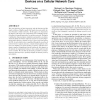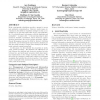CCS
2009
ACM
14 years 10 months ago
2009
ACM
Genome-wide association studies (GWAS) aim at discovering the association between genetic variations, particularly single-nucleotide polymorphism (SNP), and common diseases, which...
CCS
2009
ACM
14 years 10 months ago
2009
ACM
Many programs operate reactively, patiently waiting for user input, subsequently running for a while producing output, and eventually returning to a state where they are ready to ...
CCS
2009
ACM
14 years 10 months ago
2009
ACM
In mobile networks, authentication is a required primitive of the majority of security protocols. However, an adversary can track the location of mobile nodes by monitoring pseudo...
CCS
2009
ACM
14 years 10 months ago
2009
ACM
Peer-to-peer approaches to anonymous communication promise to eliminate the scalability concerns and central vulnerability points of current networks such as Tor. However, the P2P...
CCS
2009
ACM
14 years 10 months ago
2009
ACM
In this paper, we present a new approach to performing important classes of genomic computations (e.g., search for homologous genes) that makes a significant step towards privacy...
CCS
2009
ACM
14 years 10 months ago
2009
ACM
Secure identity tokens such as Electronic Identity (eID) cards are emerging everywhere. At the same time usercentric identity management gains acceptance. Anonymous credential sch...
CCS
2009
ACM
14 years 10 months ago
2009
ACM
CCS
2009
ACM
14 years 10 months ago
2009
ACM
The vast expansion of interconnectivity with the Internet and the rapid evolution of highly-capable but largely insecure mobile devices threatens cellular networks. In this paper,...
CCS
2009
ACM
14 years 10 months ago
2009
ACM
We propose a proximity-based access control scheme for implantable medical devices (IMDs). Our scheme is based on ultrasonic distancebounding and enables an implanted medical devi...
CCS
2009
ACM
14 years 10 months ago
2009
ACM
Most cryptographic algorithms provide a means for secret and authentic communication. However, under many circumstances, the ability to repudiate messages or deny a conversation i...
